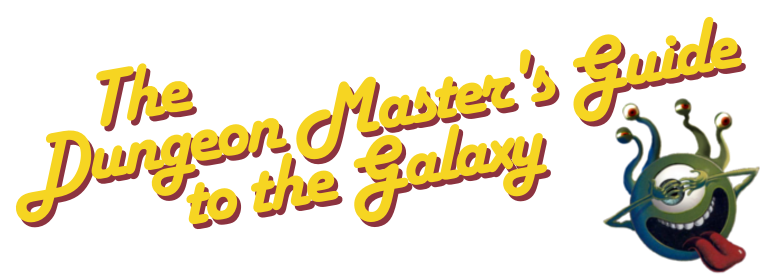About a month ago,
after suggesting 13th Age during a discussion about
carrying more than just D&D and Pathfinder products at our FLGS,
I got nominated to run it in the store... Now, as a DM I usually
don't run games in the fantasy genre. It's not that I don't like
fantasy, but if anything could be considered the 'default
genre' for RPGs, it's fantasy. There's a lot of it out there. The
same goes for D&D and systems derived from D&D, they
generally don't need my help.
Luckily, I enjoy world-building and seeing how different systems
work, and that should keep me engaged enough.
Since this is an
in-store open-table type of game, I want to showcase the cool things
that make the system different. According to the rulebook, these are the “one unique thing, icon relationships, and background
mechanics”.
The 'one unique
thing' is one of the ideas that 13th Age has cribbed from
shared-narrative style systems à la FATE. It's cool I guess, but
where 'aspects' are integral and mechanical in FATE, here it's explicitly
stated that there should be no
mechanical benefit. It's mainly intended to help the DM come up with
plots related to the PCs' backstories. As a general rule, I tailor my whole campaign to the characters involved and this feature would be somewhat redundant for me, but since this is an open table and I don't want to be too myopic in scope, I'll probably use the one unique thing more than I might under other circumstances.
That said, it's a good tool for getting backstory from players who
aren't interested in doing homework, and it's certainly nice to have
a concise statement from the ones who love to write a ton.
One of the things
that I wanted to see in action was 13th Age's icon system.
Basically, they are the most important NPCs in the setting (think
Elminster in Forgotten Realms), NPCs whose absence would cause a
major shift in the power balance of the setting. Players assign
relationship points to these icons and roll that number of d6s at the
beginning of each session to see if they can leverage the connection.
The icon system itself can be dialed up or down to work with
everything from the village elders to a pantheon of
gods.
The icons as
presented in the rules are based on classic fantasy tropes, and as
such they are fairly bland. The good news is that the writers “expect
each GM to tinker with the icon identities to suit the campaign’s
story”. Now I feel completely justified in doing a complete
overhaul of the icons. I'll post write-ups of the icons as they
appear in my campaign in a subsequent entry.
The background
mechanic is a nice simple way to do skills, but it's basically a
beefed-up version of secondary skills from AD&D with the players
making up their own instead of choosing/rolling on a table. This is
also intended to provide fluff for the DM to incorporate into the
game, though it seems to be a mixed bag. Even when prompted to
embellish their backgrounds, most of my players are hewing towards
fairly skill list-ish ones rather than going big with the fluff.
The best use I've
found for the backgrounds so far is as an easy way to tailor the base classes. One player wanted to be an Arcane Archer, and rather than
find/make a homebrew class, it was much easier to just have the
player take enough points in Arcane Archer to offset the negatives
to-hit that a Sorcerer has when using a longbow.
Next time I'll
discuss my setting more, and especially how the stock icons have been
changed to suit it.

